Is it possible to bask in a gas stove: norms and requirements + potential dangers when ignoring a ban
When the temperature in the apartment tends to uncomfortably low values, residents begin an active search for a solution to the problem. And often the first thing that comes to mind is to turn on the gas stove in the kitchen as a heater. It seems that it is enough to lend a hand with a lit match and it will soon become warm. Right?
And everything would be fine, but for some reason, the thought of whether it is possible to bask in a gas stove and what consequences you need to be prepared for is not leaving your head. We will help you to thoroughly understand this difficult issue - the article considers the dangers that lurk behind such a seemingly completely harmless heating of the room.
The content of the article:
What does GOST and the instruction for the stove say?
To understand the suitability of a gas stove for heating, it is enough immediately after device connection read the contents of the instruction manual.
Is the specified document lost or just too lazy to look for it and delve into the necessary language? Then you can not waste time and just trust the standards and requirements set out in the profile GOST 33998-2016. Where in section 8 it is said that each instruction attached to a household gas stove should contain a warning indicating that it is forbidden to use it for heating.
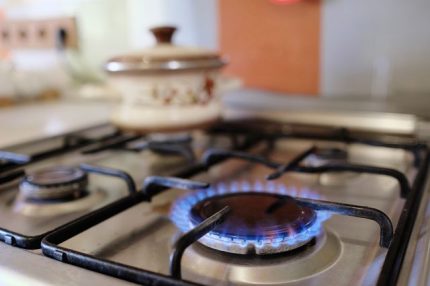
The corresponding inscription should be highlighted and begin with the word"ATTENTION!". Moreover, capital letters and the presence of an exclamation mark are not an accident. Since the test should be just that, otherwise it will be a violation of the law.
In addition, according to the requirements set out in the above GOST, on the case of each new gas stove produced or brought to the Russian Federation there must be at least one plate with a warning text similar to the one indicated above.
If the gas stove is old, for example, still Soviet, then its instructions quite possibly lack information indicating that it is forbidden to bask with it. But the owners of such devices should know that this feature does not change anything and it’s impossible to warm up with a stove anyway.
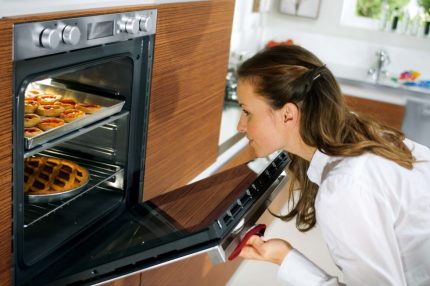
Modern gas stoves are divided into various subspecies, and also have additional functions. Which in some cases can cause confusion and a double interpretation of the terms used in specialized documents.
To avoid confusion in the wording, since the entry into force of GOST 33998-2016, all types of gas stoves are called cooking appliances.
What is true regarding:
- built-in hobs;
- freestanding hobs;
- desktop stoves;
- built-in and freestanding plates.
The same cooker status is assigned to products such as a built-in grill and built-in oven. In addition, it is forbidden to use a freestanding gas grill for heating.
That is, there are no exceptions, and stoves, like other appliances listed in the same category, can be used exclusively for cooking. By the way, it is forbidden not only to heat the premises, but also to use such devices to solve any other problems.
Hazards when heating a room with a stove
It is no coincidence that gas stoves in all relevant documents are called household appliances intended for cooking. This is done to clearly define the purpose of the products.
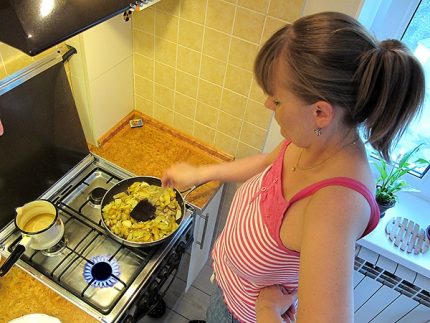
In addition, the name indicating the purpose of the device should motivate the user to the intended use. And also serve as a warning, to exclude the possibility of a double interpretation of the purpose of the plate. Moreover, both for users and other parties (for example, gorgaz specialists, lawyers, firefighters, etc.).
If you don’t want to delve into the legal difficulties, but want to understand the issue, then just remember a few important rules:
- Plates can not be heated;
- If rule # 1 is ignored, the gas consumer becomes a violator of fire safety rules. As a result, they can be brought to administrative or even criminal liability. This is indicated by Art. 38 Federal Law No. 69-FZ of December 21, 1994 "On fire safety."
And then we will talk about unpleasant and dangerous situations in which a violator of safety rules may fall. Which include: fire and explosion hazard, as well as the impact on the body of carbon monoxide.
And each reason that makes gas dangerous should be examined in detail.
Threat # 1 - probability of fire or explosion
Blue fuel makes life more comfortable, moreover, it is economically viable. But there is a significant drawback, which is that the use of gas is a risky procedure. For example, gas causes more accidents than electricity.
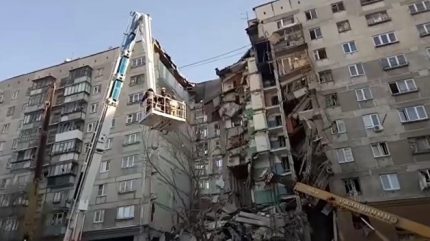
Therefore, users of stoves should remember that humanity has learned to consume gas relatively safely. But no more than that - gas easily gets out of hand. And this does not need much, for example, an explosion will occur when the gas concentration is insignificant 5% of the volume of the room, and it often ends with the ignition of something that exacerbates the situation.
We recommend that you familiarize yourself with causes of explosions in apartments.
If the gas concentration is higher (over 15% of the volume), then a fire will occur.
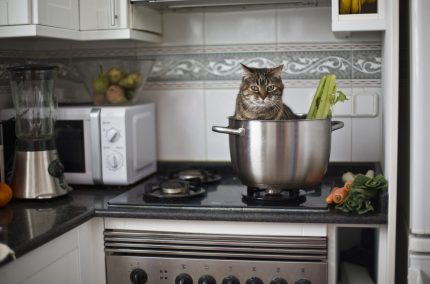
Dangerous accumulation of gas in the kitchen and other rooms occurs after the flame on the stove is extinguished without shutting off the taps.
This can happen when:
- insufficient air for gas combustion;
- plate malfunction, its incorrect operation.
Gas combustion is a reaction in which air burned 9.52 times more. And this is in ideal conditions. That is, under normal conditions of air, even more is needed (1.1-1.5 times from the indicated 9.52). Therefore, during the active use of the stove with the ineffective operation of smoke removal systems or in general in the absence of removal of combustion products, the gas combustion reaction may simply stop. Then the gas will begin to fill the volume of the kitchen and other residential premises.
Although the described situation does not happen often, gas consumers do not need to be too confident in the efficiency of their chimney.
Indeed, one unfortunate outburst of strong wind, precipitation in the form of rain, snow, frost, fog can lead to sad consequences.
In any case, the thrust becomes unstable, and in some cases it can disappear altogether. Sometimes there are reverse currents of air masses. What is called reverse thrust.
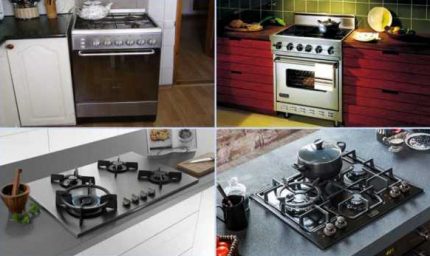
To reduce traction leads to contamination of the ducts of the ventilation system, smoke exhaust:
- combustion products;
- third-party dirt particles, objects.
So, if today the products of gas combustion are vented efficiently, then this does not guarantee anything tomorrow. For example, the presence of traction must be monitored before each inclusion of the stove, even if it is short-term and not intense. And over several hours of active heating, conditions can change dramatically.
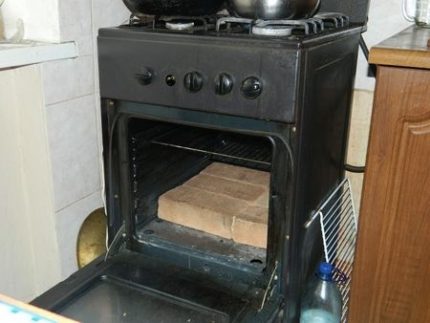
Failure of gas stoves, their incorrect operation is also a common cause of dangerous situations.
So they lead to them:
- clogging of burners, nozzles;
- failure of protective systems;
- overheating and other malfunctions.
Often, problems with heating a room with a gas stove arise due to several interrelated reasons. For example, overheating can cause unauthorized changes to the device settings, incorrect operation of systems. As a result, the gas combustion process can be interrupted, and without stopping the flow of fuel.
Threat # 2 - increasing carbon monoxide concentration
The most high-profile and well-known accidents with gas occur due to explosions, fires, as they are heard. But carbon monoxide (CO, carbon monoxide) is still an even greater danger.
The reason is that this substance is deadly, even at low concentrations. So, upon reaching a level of 0.1% of the volume of the premises, residents are guaranteed to lose consciousness. And all that remains for them is to hope for outside help. There are a lot of cases when people, still being conscious and understanding what happened, but because of weakness, they could no longer eliminate the danger on their own.
A deadly CO poisoning will occur when it reaches a concentration of 0.5%, and after 20 minutes.
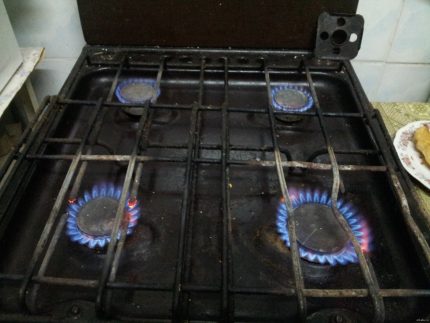
If the level of carbon monoxide crosses the mark of 1%, then in order to save the victim, there will be only 1 minute. That is, he will have almost no chances of salvation, especially considering that with the indicated value of CO, people lose consciousness by taking only 2-3 sips of such air.
Carbon monoxide is a product of incomplete combustion of gas. What happens when ineffective air exchange during heating with a stove. That is, when the capabilities of the smoke exhaust system were not enough.
A certain amount of carbon monoxide is emitted each time the flame comes into contact with substances whose surfaces have a temperature lower than that of a combustible gas.
The situation is exacerbated by the fact that carbon monoxide is a substance that does not have color and odor. Therefore, special devices are able to detect it - carbon monoxide sensors.
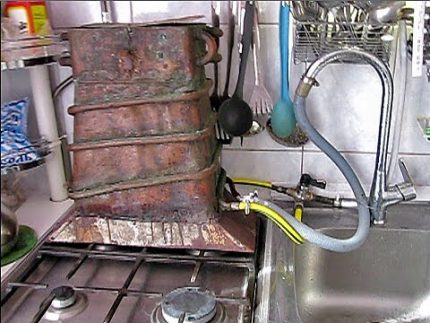
The reason for the danger of CO is that getting into the body mixes with hemoglobin and deprives it of the ability to saturate the body with oxygen.
When do accidents happen?
Accidents during heating with gas stoves in most cases occur at night. The reason is that it takes time to increase the concentration of gas in the air to dangerous values or carbon monoxide. And it is when the tenants rest.
That is, in the dark, the likelihood that owners of gas equipment will suspect something is wrong and stop heating. Or neighbors, random people, who were nearby in time, will not help. This often happens. when a gas leak occurs, the presence of which is determined by the characteristic odor.
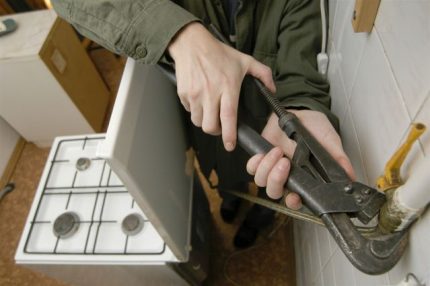
This means that by excluding stove heating at night during the rest of all family members, the probability of an accident, destruction, or damage to property can be significantly reduced. But this is not a panacea, since there are many incidents that occurred at any other time of the day.
It is also important that if a plate break is detected, contact immediately service organization, with which you have an agreement, so that a specialist quickly detects and corrects the breakdown. The use of faulty gas equipment is prohibited at the legislative level.
Hazard identification procedure
If you suspect a concentration of gas or carbon monoxide in your home, you need to take a series of actions.
Namely:
- Turn off the gas stove. Why do you need to shut off the taps;
- Open wide windows, doors in order to ventilate the room. What can eliminate the danger in a matter of minutes;
- Report on the incident to the gas service (ryegas). Why do you need to dial 104 (04) or 112.
If necessary, notify other residents and neighbors and arrange for their evacuation.
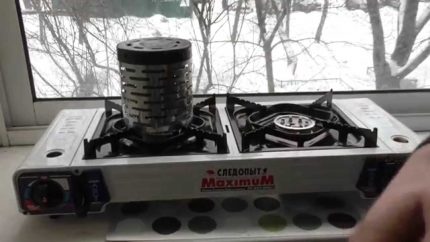
Basic knowledge signs of CO poisoning can save a life. So, the first of these is a decrease in the rate of psychomotor reactions. Which is often accompanied by a rush of blood to the head. People with a sick heart can additionally feel strong tingling, the same as with significant physical exertion. Then there is a headache, a knock at the temples.
All of the listed signs of poisoning should be remembered at least because the situation can be corrected when they are quickly detected. If the victim does not use the chance, then poisoning of the middle stage with possible motor paralysis will come. At which a person will be still conscious, but will not be able to do anything anymore, And then there is a loss of consciousness.
Therefore, having found victims of exposure to carbon monoxide, they must be immediately moved to a safe place. That is, in the fresh air, where you need to remove constraining clothes from a person and hide. This is usually the only thing you can do before the doctors arrive. Which, by the way, needs to be called immediately.
Types of punishments for heating stoves
Our country periodically experiences all kinds of crises, cataclysms, which affects the quality of service. As a result, the townsfolk came up with a lot of options for using gas stoves for other purposes.
For example, stoves are used not only for heating air, but also for heating bricks, salt in the oven and other things. All these devices are then moved to living quarters and used to raise the temperature. You can get information about such a method as heating a large container with water to a boiling state. Then the gas turns off, and the water gives off heat to the air in the living room for a long time.
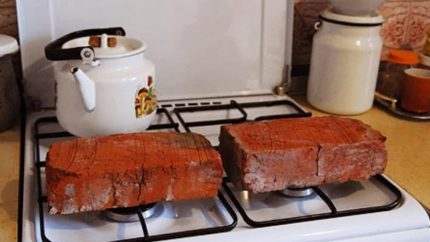
Do not fool yourself and risk your life. Since there are no completely safe options for heating a room with a stove. The reason is that it is not gas that causes accidents, but ignoring safe use guidelines. Consumers simply leave the stoves without control (which is itself prohibited), forget about them, fall asleep.Which leads to incidents.
This feature has been taken into account by lawmakers, therefore, any method of heating is considered prohibited, since this is not the intended use of the stove.
Violators of fire safety measures should be aware that various penalties are provided for by their legislation. For example, in CAO there are more than a dozen articles on which sanctions may be imposed on them.
But the most severe punishments for heating with stoves and its consequences are spelled out in the domestic Penal code. So in 168 articles which said that for a violation that led to damage to property may be sanctioned by a fine of up to 120 thousand rubles. In addition, the culprit is allowed to restrict freedom for a period of one year.
And in Art. 219 of the Criminal Code it refers to penalties for violation of fire safety measures that have harmed human health. A large fine is envisaged for such an act (up to 80 thousand rubles), and if the case is difficult, then an amateur can be warmed with a stove and imprisoned. And not for the shortest time (up to 3 years). When the actions of the offender led to the death of people, they can bring him to long-term forced labor (up to 5 years) or imprisonment for an impressive term (up to 7 years).
Conclusions and useful video on the topic
The information presented in the first video material will help to timely identify signs of carbon monoxide poisoning.
Unfortunately today a lot of information is posted on the network that confuses gas consumers, which is fraught with consequences. An example of this is the following video, where violators of fire safety measures are trying to sell devices that can not be used.
Heating an apartment, any other room with a gas stove is a dangerous procedure, therefore it can be argued that in this case the goal does not justify the means. It’s cheaper, more reliable and more practical to purchase a specialized unit (for example, choose a suitable heater: electric, infrared, mycothermal, oil or make homemade) Such a solution, and it is quite safe, will really help increase the comfort of living.
You do not agree that the stove can not be heated and that this is a rather dangerous occupation? Or do you know real examples when people suffered from inappropriate use of household appliances for cooking? Express your opinion in the comments section, ask questions, participate in the discussion.

 Is it possible to hang a microwave over a gas stove: safety requirements and basic installation rules
Is it possible to hang a microwave over a gas stove: safety requirements and basic installation rules 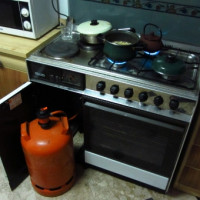 Is it possible to keep a gas cylinder in an apartment: rules and regulations for the use of balloon gas
Is it possible to keep a gas cylinder in an apartment: rules and regulations for the use of balloon gas 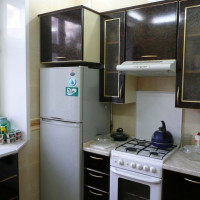 Is it possible to put a refrigerator near a gas pipe: the subtleties of safe equipment placement
Is it possible to put a refrigerator near a gas pipe: the subtleties of safe equipment placement 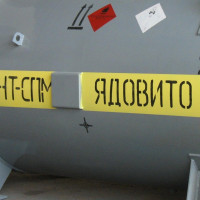 What is the smell of gas called: what gives natural gas a characteristic smell + odorant hazard class
What is the smell of gas called: what gives natural gas a characteristic smell + odorant hazard class 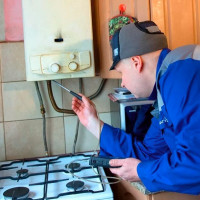 Rules for the operation of gas equipment in residential buildings: measures and standards for safe use
Rules for the operation of gas equipment in residential buildings: measures and standards for safe use 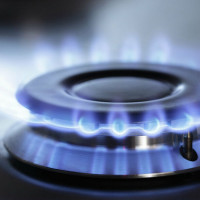 Fire safety of gas equipment: rules and regulations for the operation of gas appliances
Fire safety of gas equipment: rules and regulations for the operation of gas appliances  How much does it cost to connect gas to a private house: the price of organizing gas supply
How much does it cost to connect gas to a private house: the price of organizing gas supply  The best washing machines with dryer: model rating and customer tips
The best washing machines with dryer: model rating and customer tips  What is the color temperature of light and the nuances of choosing the temperature of the lamps to suit your needs
What is the color temperature of light and the nuances of choosing the temperature of the lamps to suit your needs  Replacement of a geyser in an apartment: replacement paperwork + basic norms and requirements
Replacement of a geyser in an apartment: replacement paperwork + basic norms and requirements